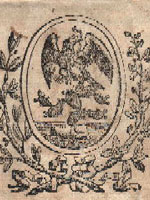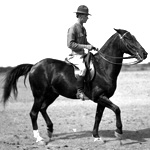The Movement to Populism
This iCue Mini-Documentary introduces the Farmers' Alliance, which formed a base of the early Populist Party.
THis feature is no longer available.
This iCue Mini-Documentary introduces the Farmers' Alliance, which formed a base of the early Populist Party.
THis feature is no longer available.
The AP Annual Conference is the largest gathering of the Advanced Placement Program and Pre-AP communities, AP teachers and coordinators, middle school teachers, and administrators and counselors from across the United States and throughout the world.
This workshop provides a varied program of lectures, demonstrations, analysis of documents, independent research, and group work that introduces teachers to the holdings and organization of the National Archives. Participants will learn how to do research in historical records, create classroom material from records, and present documents in ways that sharpen students' skills and enthusiasm for history, social studies, and the humanities. Each participant selects and prepares to research a specific topic, searches the topic in the records of the National Archives, and develops a teaching unit that can be presented in his or her own classroom.
This workshop provides a varied program of lectures, demonstrations, analysis of documents, independent research, and group work that introduces teachers to the holdings and organization of the National Archives. Participants will learn how to do research in historical records, create classroom material from records, and present documents in ways that sharpen students' skills and enthusiasm for history, social studies, and the humanities. Each participant selects and prepares to research a specific topic, searches the topic in the records of the National Archives, and develops a teaching unit that can be presented in his or her own classroom.
The institute is divided into three levels, as follows:
101: This 40-hour training begins with an in-depth study of the Declaration of Independence. Participants will then be taken through the ancient and European origins of the U.S. Constitution, followed by the American origins. The training will continue with a famous Federalist debating a famous Anti-Federalist over whether a New York State convention should vote to ratify the Constitution in 1788.
Then attending teachers will be taken on a walk through the seven articles of the Constitution. The remainder of the time will be spent studying the First Amendment and famous Supreme Court cases on the First Amendment, including the current term cases.
The agenda is divided into blocks of time spent with scholars, followed by break-out sessions where activities are demonstrated on the curriculum covered in the scholar sessions.
201: Available to those teachers who have completed the 101 session, the advanced session begins with a look at the "Ladder of the Bill of Rights." The remainder of the three-day, 18-hour institute is spent studying Amendments Two through 10, along with Supreme Court cases decided under each of these amendments. Break-out sessions follow each scholar session with activities on the Bill of Rights.
301: The one-day, seven-hour Update Session is available to those teachers who have previously attended both 101 and 201. Participants will spend most of the time discussing Supreme Court cases that have been decided during the past few years with the scholars. They will also receive a new activity guide, which includes lessons on Federalism and writing.
Over the past five years, pre-service through first-year teachers have enriched their teaching and content knowledge by completing this program. Its goal is to expose beginning and future teachers at the elementary, middle, and high school levels to strategies and programs which will help them be better civic educators. The institute content includes discussions and practical application of concepts dealing with local, Texas, and national government and the U.S. Constitution. In addition, each level has special programs designed for that grade level. All materials distributed are correlated with the TEKS standards and the TAKS test. Lessons also include gifted and talented/advanced placement extensions.
This professional development opportunity will bring Texas teachers together with leading scholars to explore important constitutional issues in our nation's history. The program offers teachers the opportunity to work with leading scholars of U.S. history, political science, and law and share strategies for teaching with primary sources.
At this workshop participants will engage in dynamic, in-depth, interdisciplinary study of the Alamo and associated major themes of American history, literature, and popular culture. They will study in intimate seminar settings with major scholars, interact with their colleagues in lively conversations, and develop classroom teaching activities based on individual interdisciplinary research conducted in the Alamo Library Archives, the Institute of Texans Cultures, the American History Center and other Texas archives while working in seminars with five nationally recognized Texas scholars.

Facsimiles and transcriptions of 12 Texas Constitutions from 1824 to 1876. Constitutions include the 1824 Federal Constitution of United Mexican States, in Spanish with an English transcription; the document that joined Texas to the U.S. in 1845; the 1861 secession constitution; and the 1869 reconstruction version. Visitors may search all constitutions by subject. The site provides annotated bibliographies of 61 primary source documents and 55 books and articles about Texas constitutions. Links to 13 sites about Texas history and constitutions in general. The site is easy to navigate and will be interesting for research on legal history and the west.

These more than 8,000 images document the history and development of South Texas and the border. The collection features the life's work of commercial photographer Robert Runyon (18811968). Topics include the U.S. military presence in the area prior to and during World War I and the growth and development of the Rio Grande Valley in the early 1900s.
A special section presents nine of Runyon's 350 photographs of the Mexican Revolution (19101920) in Matamoros, Monterrey, Ciudad Victoria, and the Texas border area from 1913 through 1916. "Maps of the Lower Rio Grande" offers a number of topographical and military maps depicting the region. The website also offers essays on the revolution and on Runyon.